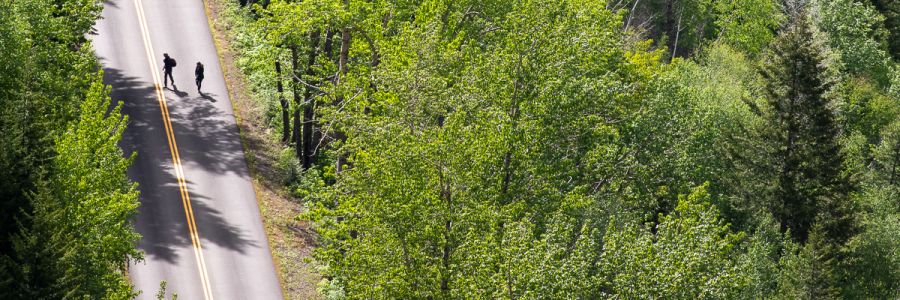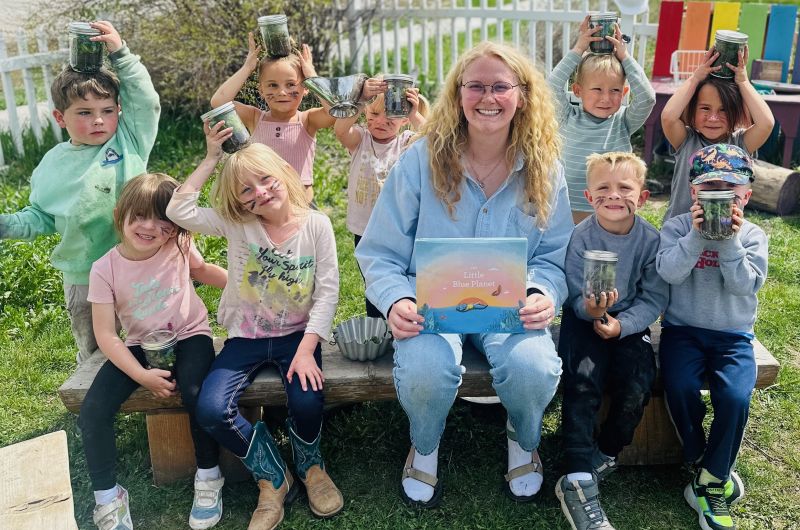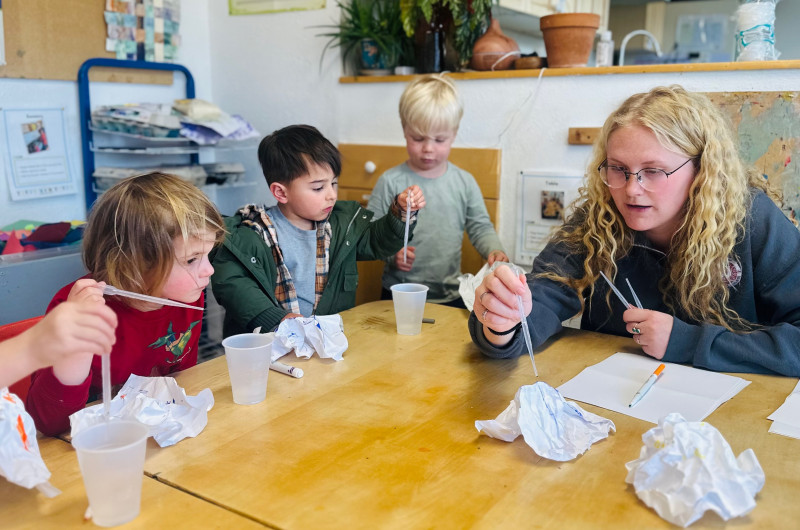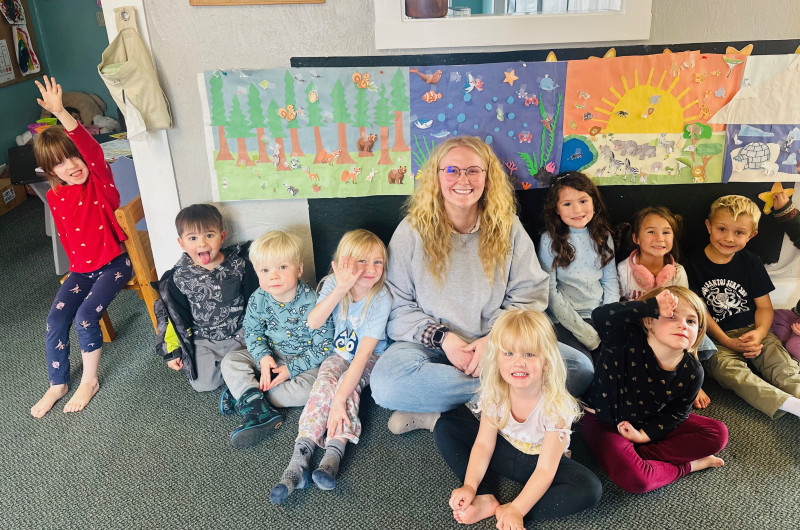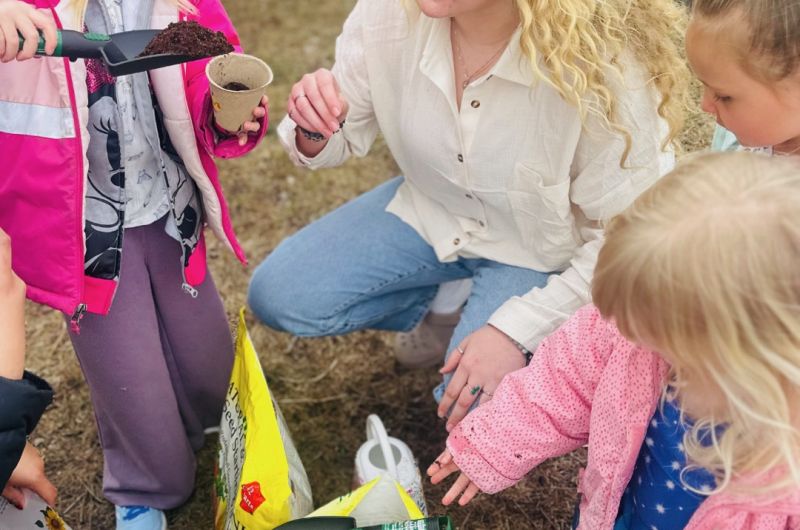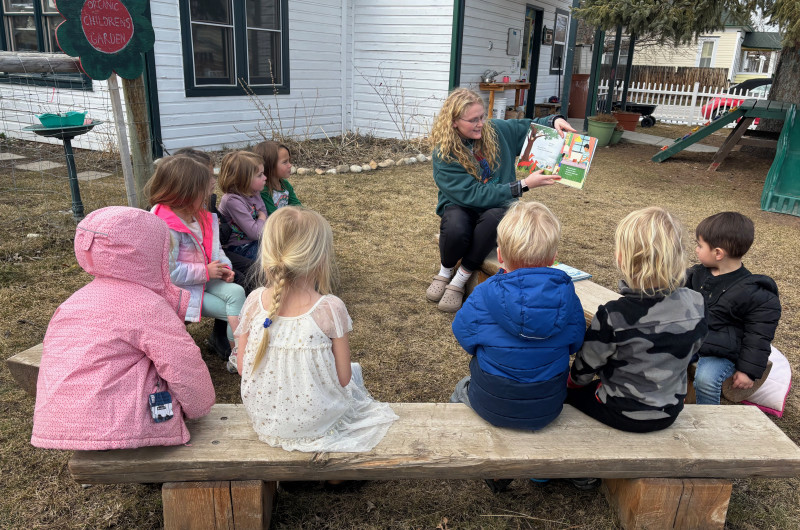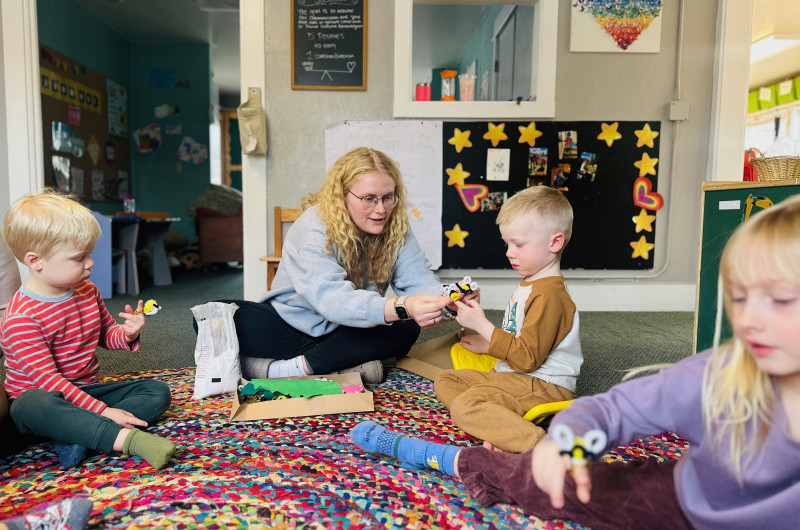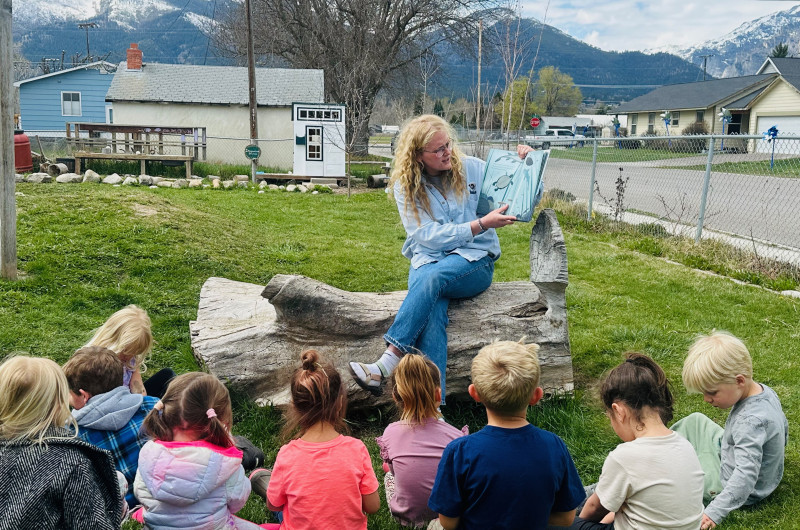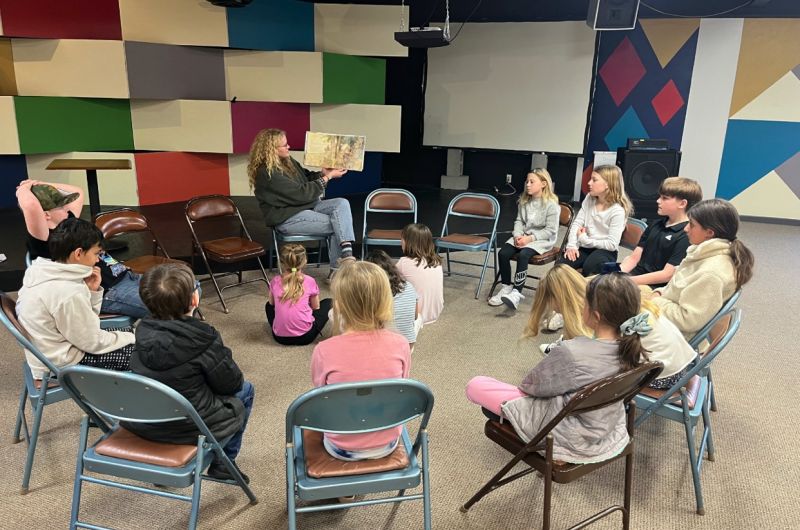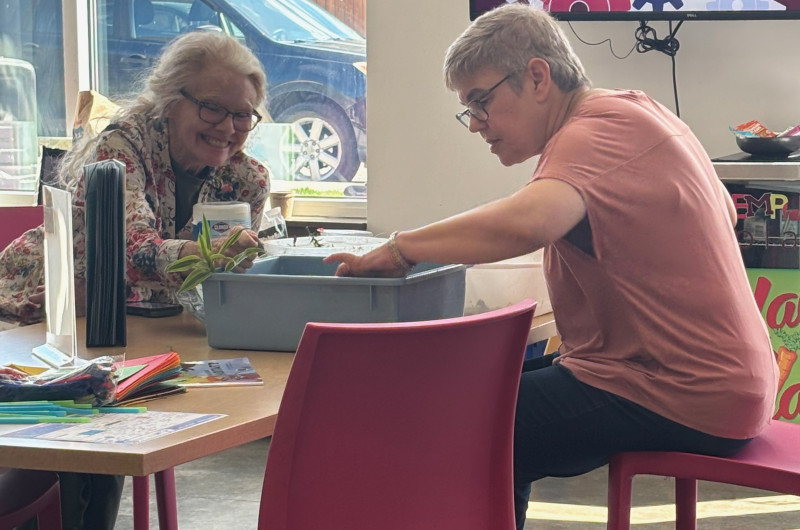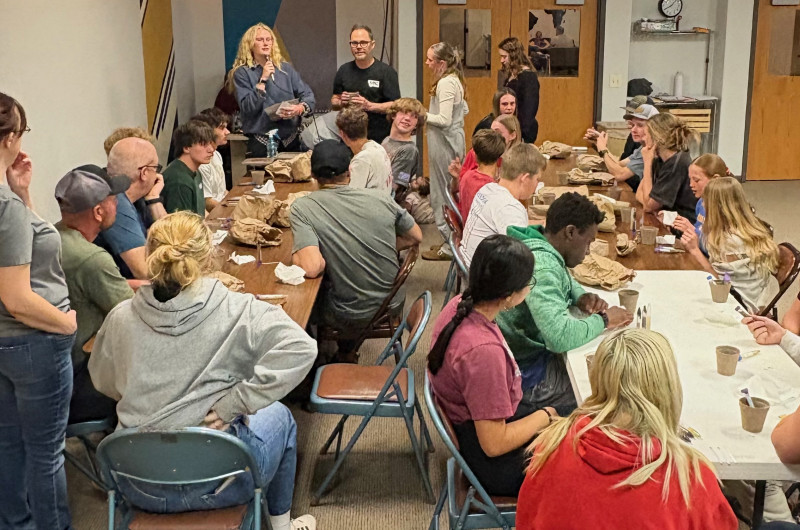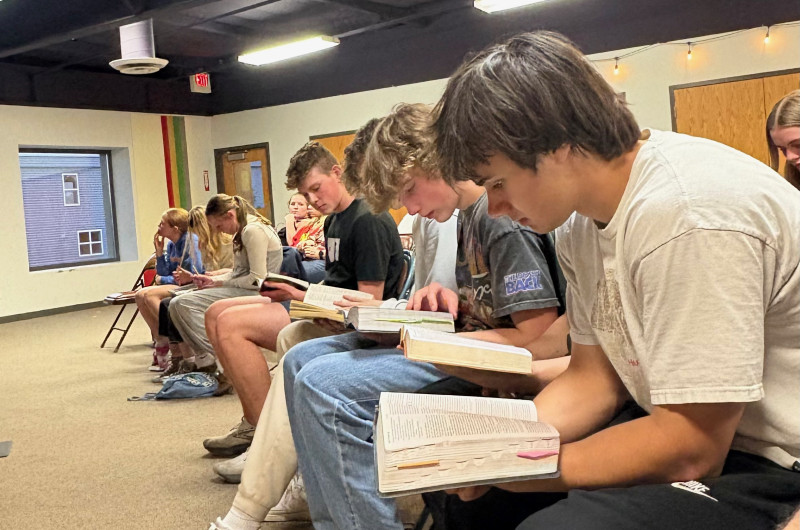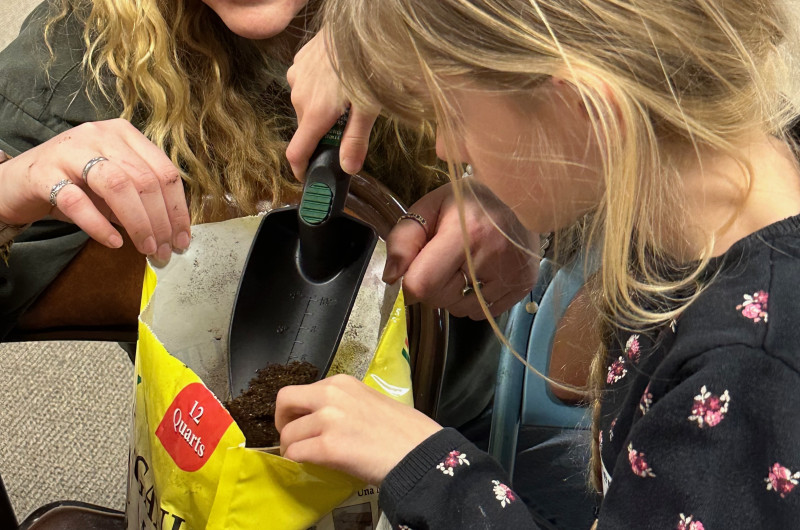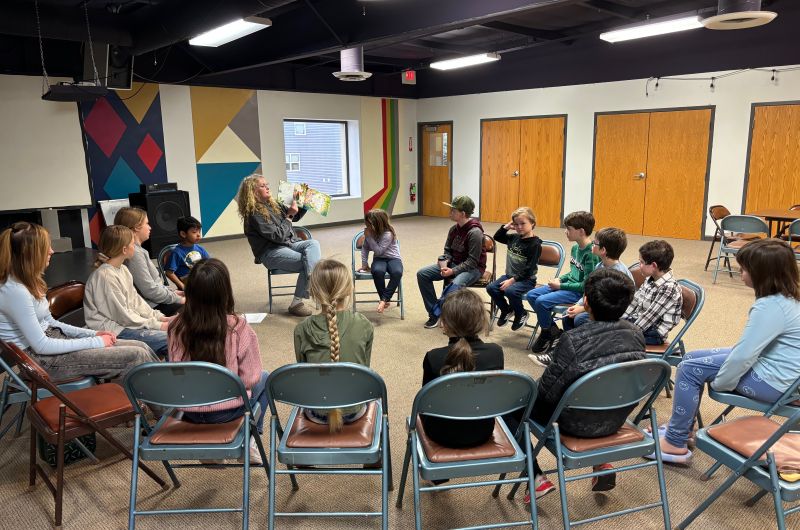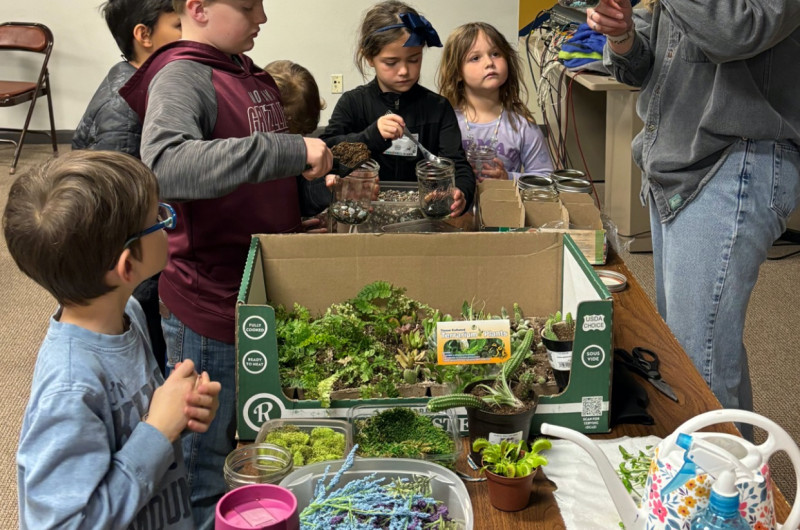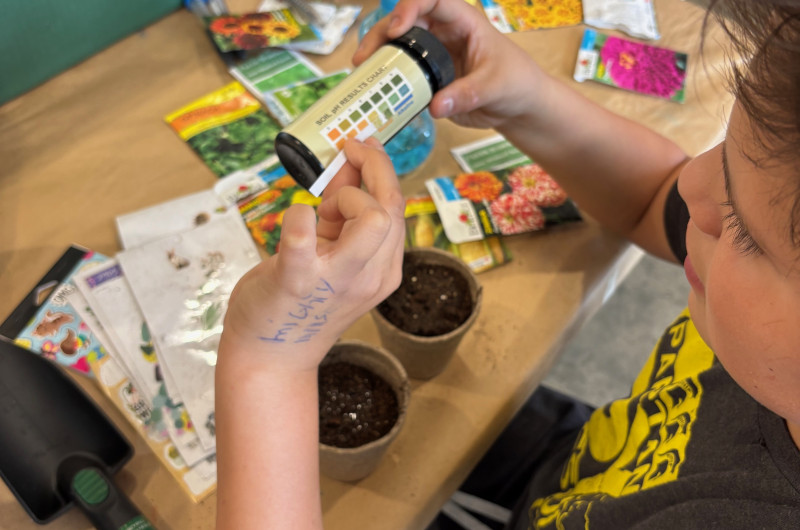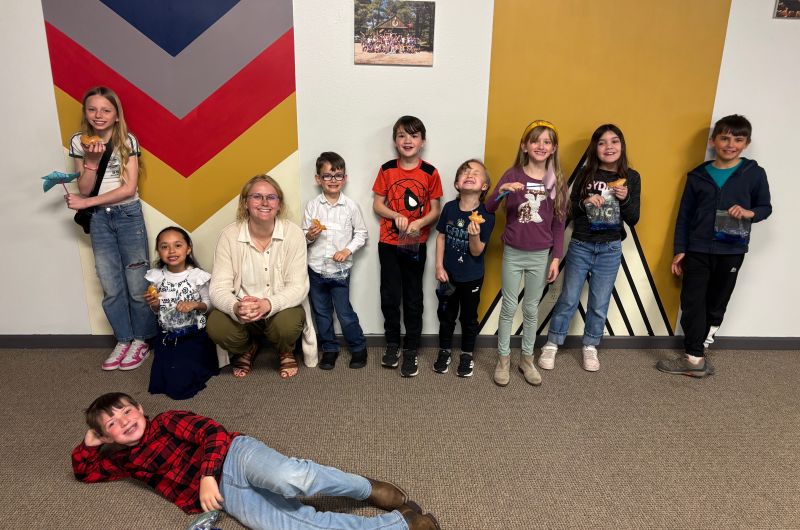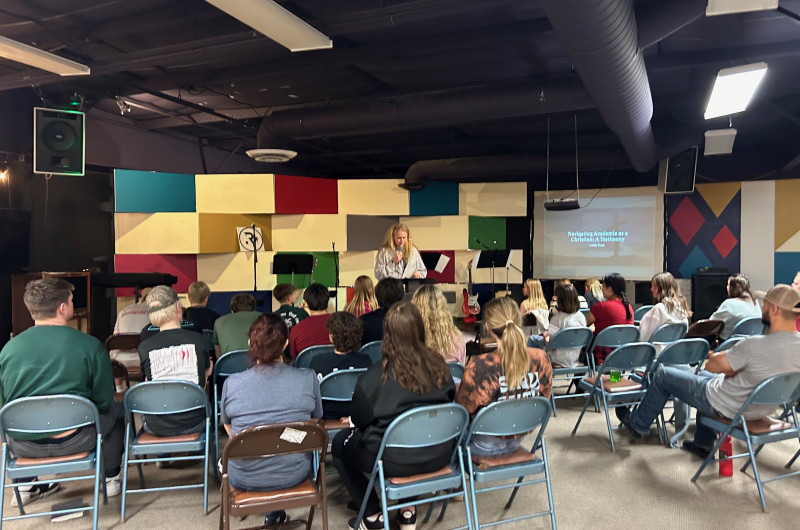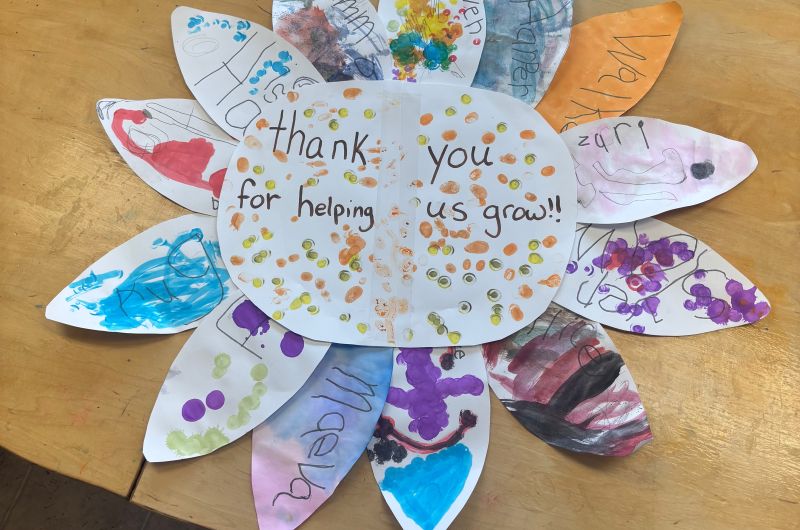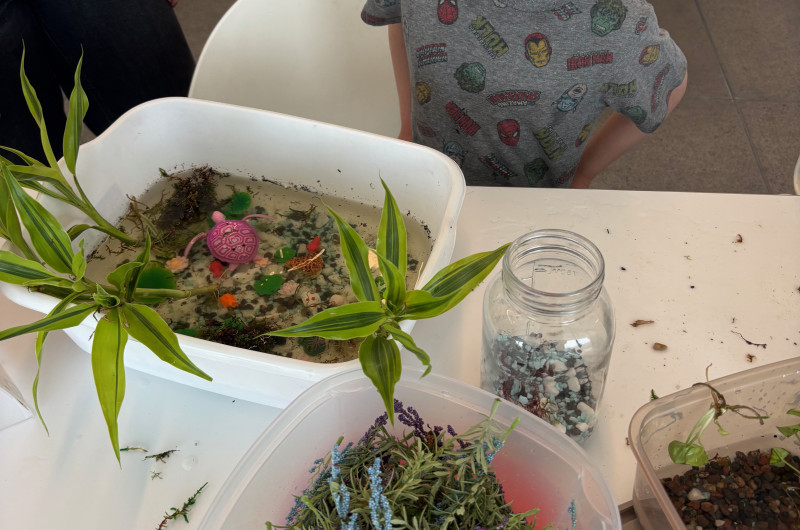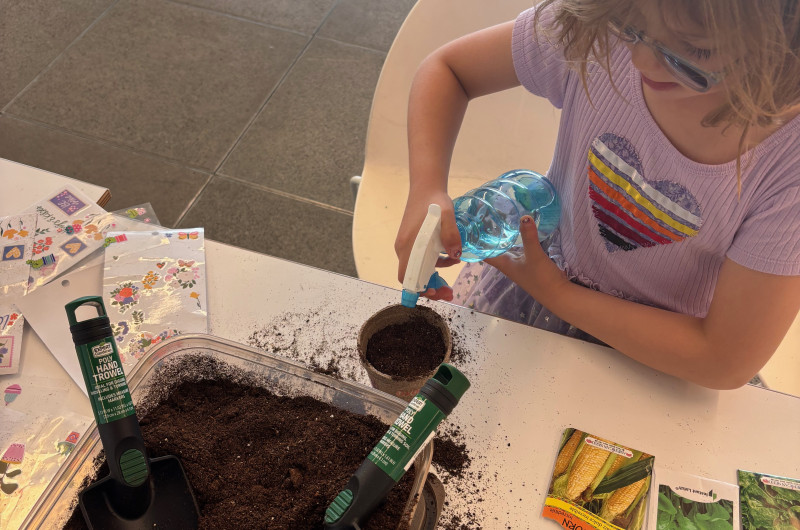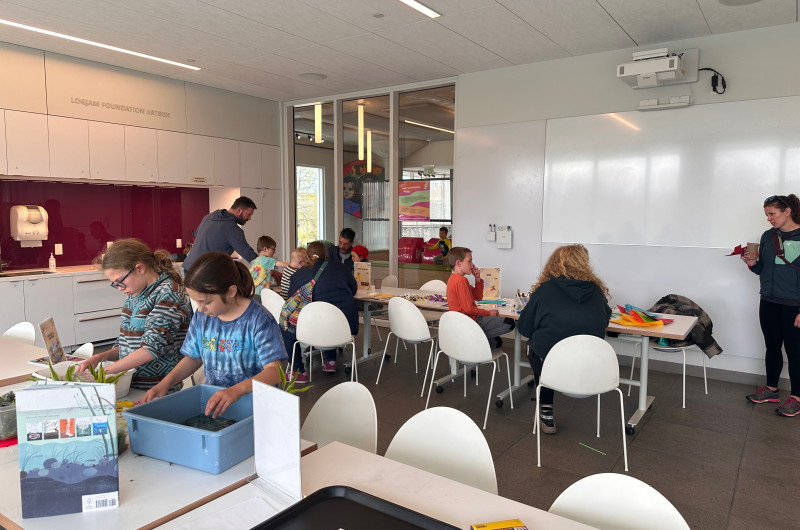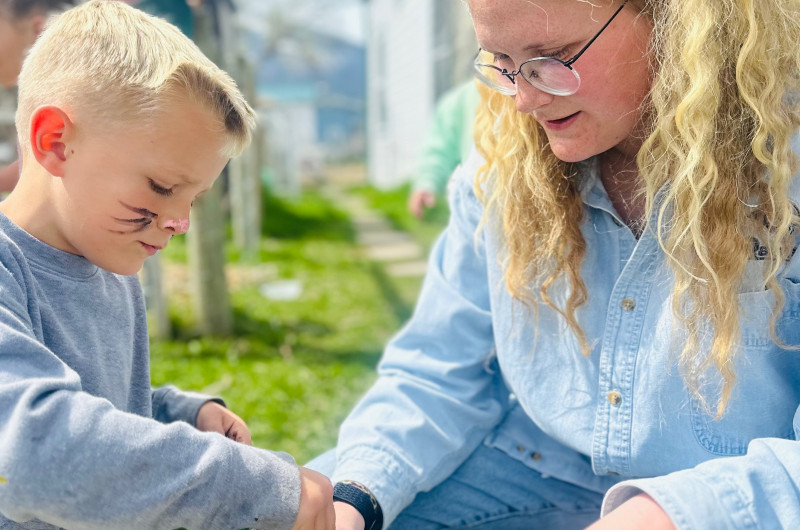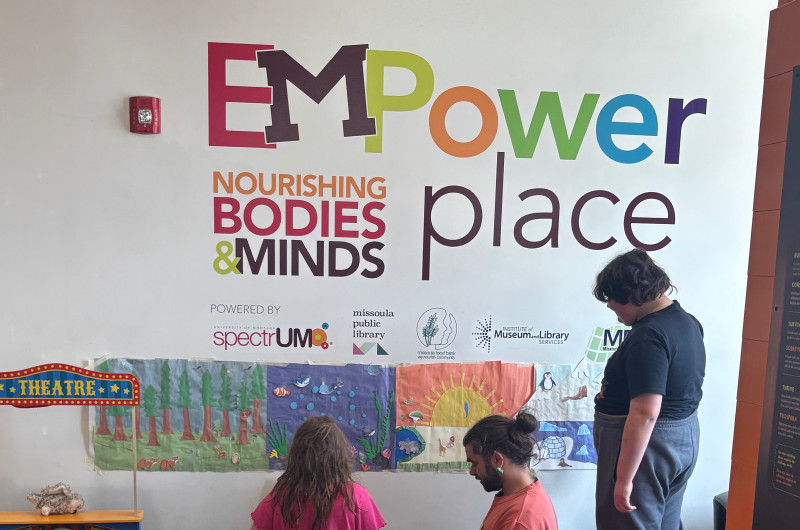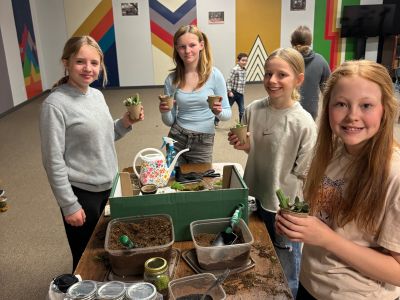Lucille Vanek
From Facts to Fables: Discovering the World Through Stories and Science 
Welcome to my webpage on storytelling, science, and environmental philosophy!
Stories shape the way we see the world. Science helps us understand it. From Fables to Facts brings them together, blending imagination with hands-on discovery to spark curiosity and deepen our connection with nature. Whether it’s a fable that shifts your perspective or an experiment that makes you see the environment in a new way, this project is about exploring, questioning, and engaging with the world around us.
Dive in, get inspired, and check out my full portfolio here!
Land Acknowledgement
The Ñý¼§Ö±²¥ acknowledges we are in the aboriginal territories of the Seli’š and Qlispe’ people. We honor the path they have always shown us in caring for this place for the generations to come. For many generations the Salish, Kootenai, Pend d'Oreille and other tribes, including the Blackfeet, Nez Perce, Shoshone, Bannock, and Coeur D'Alene, have shaped and influenced the landscape, purpose and impact of education in the Missoula Valley.
 Dedication
Dedication
To those who find wonder in both stories and science—who see the magic in a well-told tale and the beauty in a well-run experiment—this project is for you. Thank you for believing that imagination and inquiry can coexist, that curiosity is a virtue, and that learning should feel like discovery.
To my mentors, friends, and the Ñý¼§Ö±²¥’s Environmental Philosophy Graduate Program: your insights and encouragement helped shape not only this project, but the way I think about education, ethics, and the natural world. To Writing Coaches of Montana, thank you for reminding me that words matter, that stories stick, and that community is built one thoughtful conversation at a time.
And to my family—especially my mother, who nurtured both my faith and my curiosity—for being the quiet force behind every story I tell, every lesson I teach, and every child I hope to inspire.
And above all, to Jesus—the ultimate storyteller and teacher—thank you for showing us that truth can be both simple and profound, and that love is the foundation of every good lesson.
Background
From Fables to Facts began as a way to connect storytelling and science, blending narrative imagination with hands-on discovery to encourage a deeper connection to the natural world. The idea grew out of my work in environmental philosophy, where I explored how fiction and storytelling shape our ethical attitudes toward nature. Inspired by thinkers like Marcia Muelder Eaton, who argues that narratives influence how we value the environment, I wanted to take this concept a step further—pairing stories with scientific experiments to create a tangible, interactive way of engaging with nature.
This project also reflects my broader academic and personal interests. With a background in environmental science and philosophy, I’ve always been drawn to the intersections of ethics, ecology, and education. I’ve worked in libraries, writing programs, and community engagement initiatives, all of which reinforced the power of storytelling in making complex ideas accessible. From Fables to Facts is a culmination of these experiences—a project designed to make learning about the environment both imaginative and experiential.
Curiosity is at the heart of both storytelling and science, especially in younger generations, where the thrill of discovery can spark lifelong engagement with the natural world. Whether it’s through a fable that shifts a perspective or an experiment that reveals a hidden process of nature, this project embraces that sense of wonder—encouraging exploration, questions, and hands-on learning as pathways to deeper understanding.
But the impact doesn’t stop with children.From Fables to Facts was designed with flexibility in mind, inspired by spectrUM Discovery Area’s commitment to “K-through-Gray” learning. This approach shaped the project’s adaptability, encouraging curiosity and discovery across generations—from preschoolers to grandparents—through storytelling, science, and shared experience. By creating activities that are engaging for kids while also being meaningful for adults, this project promotes intergenerational learning. When families gather around a story and experiment together, curiosity becomes contagious, sparking discussions and deeper connections that ripple outward. The goal is a domino effect: as children explore, parents and caregivers reflect, and entire communities become more engaged in thinking about and caring for the natural world.
By combining fables with real-world experiments, From Fables to Facts aims to cultivate curiosity, responsibility, and a sense of wonder—encouraging people of all ages to see the world not just as something to study, but as something to engage with and care for.
Theoretical Applications
-
Imagination isn’t a luxury—it’s a moral and cognitive necessity. At From Fables to Facts, we explore how imagination shapes attention, deepens perception, and cultivates ethical awareness, particularly in our relationship with the natural world. When paired with science and storytelling, imagination becomes a powerful tool for both learning and moral growth.
Philosopher Silvia Panizza describes attention as a narrowing of perception—one that can either trap us in self-interest or open us to the lives, needs, and realities of others. Her concept of “unselfing” (Panizza, 2022, p. 7highlights how imagination enables us to shift our focus outward, expanding our field of vision and fostering a more accurate and compassionate engagement with the world. Likewise, Iris Murdoch warns against imagination misapplied—as fantasy that serves only personal gratification. For Murdoch, true imagination is evaluative: it enhances our ability to see clearly and respond rightly.
From Fables to Facts builds on these insights to show how structured storytelling—especially through fables—can guide children and adults alike toward greater moral imagination. Rather than distorting reality, good stories illuminate it. They help us reassess our ecological relationships, imagine future consequences, and care about what might otherwise remain abstract. This is especially important in environmental ethics, where the stakes are high but the harm can feel distant. Through narrative, the environment becomes not just a topic, but a character—a participant in the moral imagination.
This work draws on a wide range of disciplines: narrative ethics (Martha Nussbaum), environmental aesthetics (Allen Carlson, Arnold Berleant), experiential education (David Sobel), and cognitive psychology. From Nussbaum’s idea that stories allow us to inhabit unfamiliar perspectives to Berleant’s view that aesthetic experience is immersive and participatory, the message is clear: attention is never passive, and imagination is never idle. They are skills that must be cultivated—especially in childhood.
Scientific inquiry supports and strengthens this framework. When children engage in hands-on experiments after reading stories—like building a wind turbine after reading The Boy Who Harnessed the Wind, or creating a pond ecosystem after Over and Under the Pond—they’re not just learning facts. They’re learning how to look closely, ask questions, and imagine solutions. This fusion of fiction and science not only enhances environmental knowledge, but anchors it in moral reflection and personal experience.
Imagination also supports early reasoning and decision-making. Research by Richards and Sanderson shows that even young children use imaginative play to form logical connections and solve problems. By inviting them into fictional scenarios grounded in ecological reality, From Fables to Facts helps develop cognitive flexibility and ethical sensitivity. Meanwhile, studies on unconscious bias (Hoffman and Winters) affirm that perspective-taking—especially through imaginative storytelling—can reduce prejudice and increase empathy, outcomes that are essential for a more ecologically responsible future.
In short, this project argues that how we imagine the world matters as much as how we study it. By combining storytelling with science, and grounding both in theories of attention and ethics, From Fables to Facts offers a model for education that is not only intellectually rich, but also morally urgent. It teaches us to see the world more clearly—and to care more deeply once we do.
-
From Fables to Facts is rooted in the idea that how we engage with the natural world is just as important as what we know about it. This project blends storytelling, scientific inquiry, and sensory immersion to create a multidimensional form of environmental education—one that draws from several key thinkers in environmental aesthetics and philosophy.
Allen Carlson’s model of scientific cognitivism reminds us that appreciating nature aesthetically requires more than detached observation—it requires informed attention. He argues that scientific understanding offers the conceptual scaffolding necessary for meaningful perception. For Carlson, knowledge doesn’t detract from the beauty of nature—it deepens it. A child who learns how wetlands filter water or how bees pollinate flowers sees more, and cares more.
But knowing is not the same as feeling. That’s where Arnold Berleant’s participatory aesthetics enters. Berleant challenges the traditional view of the observer as a passive viewer of nature, and instead proposes immersion—“being in it,” not just looking at it. The aesthetic experience, in his view, comes alive when it is lived: feet in the mud, hands in the soil, surrounded by the buzzing, breathing, growing world.
To bridge the gap between knowing and feeling, From Fables to Facts applies C. Thi Nguyen’s concept of layered agency—the idea that we can step into new ways of acting and seeing through structured, game-like experiences. Just as a game reorients a player’s goals and perception, educational activities can temporarily reframe our role in the natural world. A fable about a heron navigating habitat loss isn’t just a story—it becomes a launchpad for exploring a real wetland, observing species, and testing water samples. The story opens the door; the science gives it depth; the participation makes it real.
Marcia Muelder Eaton adds another vital dimension: fiction. For Eaton, stories are not just entertaining—they shape the way cultures perceive the environment. Fiction “at the service of fact,” she argues, helps audiences connect emotionally while remaining grounded in ecological reality. But she also warns against romanticized portrayals—like Bambi—that distort our view of nature’s complexity. That’s why From Fables to Facts insists on pairing fiction with scientifically accurate content and hands-on experiences.
This integration creates a layered model of environmental engagement:
-
Eaton’s fiction captures attention and stirs emotion.
-
Carlson’s science structures intellectual understanding.
-
Berleant’s immersion promotes embodied connection.
-
Nguyen’s layered agency ties it all together, guiding participants from story to thought to action.
For example, reading The Ant and the Grasshopper can lead to discussions on resource management, followed by activities tracking seasonal plant cycles. The Tortoise and the Hare might segue into physics experiments on speed, motion, and endurance. These stories aren't just allegories—they’re springboards for cognitive, ethical, and physical engagement with the world around us.
Ultimately, From Fables to Facts moves environmental aesthetics beyond abstract appreciation. It invites participants—children and adults alike—into a deeper relationship with nature. One that is imaginative, informed, and immersive. One that doesn’t just tell us about the world, but helps us experience, understand, and care for it—layer by meaningful layer.
-
-
Environmental ethics is often framed in terms of data, policies, and prescriptions—an arena where storytelling is treated as ornamental, emotional, or even distracting from real analysis. But this view obscures a deeper truth: storytelling is not a supplement to environmental philosophy—it is its foundation. The way we narrate the world signficantly shapes how we perceive it, what we value, and how we act. This conviction animates From Fables to Facts, where stories function not merely as pedagogical tools, but as ethical methods. They do not just illustrate facts—they cultivate attention, moral imagination, and participatory care.
This project draws on philosophical frameworks that treat storytelling not as a means to an end, but as the very architecture of ethical life. Holmes Rolston III, for instance, argues that nature itself unfolds like a story—its structure embedded in evolutionary processes, ecological relations, and the purposive striving of organisms. He writes that each organism moves toward “the good of its own” (Rolston, 1994, p. 16), and he challenges the notion that value requires human recognition. Against thinkers like Windelband and Norton, Rolston maintains that value is discovered, not conferred. His work suggests that environmental degradation is not only materially destructive but ethically devastating—it interrupts the ongoing narrative of life. When we extinguish a species or clear-cut a forest, we do not simply eliminate resources; we silence a story in motion. This is not Rolston’s own metaphor, but it aligns with his view that ecosystems are the result of long, dynamic processes—natural histories shaped by evolutionary achievement—and with his broader vision of nature as meaningful independent of human awareness.
Yet recognizing nature’s intrinsic story demands more than observation; it requires emotional attunement and imagination. Marcia Muelder Eaton argues that fiction plays a central role in shaping our ethical responses to the natural world. In Fact and Fiction in the Aesthetic Appreciation of Nature, she contends that moral imagination helps connect our aesthetic experiences of nature with ethical concern, allowing us to move from perception to care (Eaton, 1998, pp. 171–180). Fiction, in her view, is not merely decorative—it is instrumental in forming emotional sensitivity and ethical attention to environmental realities. Stories allow readers to inhabit environmental concerns in ways that bypass intellectual detachment. “One manifestation of imagination—fiction—plays an enormous role in shaping the way a culture perceives and conceives the environment” (p. 171). Eaton’s work highlights how fiction cultivates the emotional capacities needed for environmental care—capacities that cannot be generated by statistics or empirical observation alone. While reports may inform us of what is happening, fiction helps us feel what is at stake.
Christian theology offers a third layer of environmental storytelling, one grounded in sacred narrative. The Genesis creation account affirms the world’s intrinsic value by declaring it “very good” before any mention of human use (Genesis 1:31, KJV). The “dominion” verse (Genesis 1:28) is frequently invoked as theological justification for exploitation, but this reading neglects the original Hebrew, where radah (רָדָה) implies just rule or responsible stewardship, not tyranny. This vision is clarified in Genesis 2, where humanity is placed in the garden “to till and to tend”—l’ovdah u’l’shomrah (לְעׇבְדָה וּלְשׇמְרָה)—terms that evoke service, care, and covenantal responsibility rather than domination. Jesus’s parables reinforce this sacred ecology, drawing spiritual truths from seeds, birds, and trees. Nature becomes a co-teacher in divine wisdom, not a backdrop to human drama. Contemporary theologians like Ellen Davis (2009) and Matthew Scully (2002) argue that environmental degradation constitutes not only biological harm but spiritual rupture—a betrayal of covenantal trust between humanity and the rest of creation.
Taken together, these thinkers suggest that environmental ethics arises not through scientific, aesthetic, or theological reasoning alone, but through their convergence in narrative. Rolston teaches us to see nature as meaningful and valuable apart from us. Eaton reminds us that fiction cultivates the emotional depth needed to care. Christian theology frames this caring response as sacred obligation. These insights shape the foundation of From Fables to Facts, a project designed to engage learners not just cognitively, but imaginatively and ethically. Each pairing of story and science invites participants to encounter ecosystems as moral communities—spaces filled with agency, meaning, and interdependence. Whether designing pollination models, planting seeds, or building renewable energy systems, participants are not simply absorbing information—they are inhabiting relationships of care. They are being trained, through narrative, to see themselves as part of the world’s unfolding story.
As Rolston suggests, we are participants in a story already in motion—one not authored by us, but into which we are born with the capacity to respond. Our task is not to dominate the plot, but to contribute wisely to its unfolding. In times of ecological crisis, storytelling is not sentimentalism—it is strategy. It is through stories—scientific, fictional, and sacred—that we cultivate the attention, compassion, and reverence necessary for environmental stewardship.
Partnerships
-
 A network of educators and caregivers dedicated to early childhood education in the Bitterroot Valley, with a strong focus on place-based, community-rooted learning. Check out more about the organization
A network of educators and caregivers dedicated to early childhood education in the Bitterroot Valley, with a strong focus on place-based, community-rooted learning. Check out more about the organization -
 A mission-driven community hub that values service, spiritual growth, and education, especially through youth mentorship and family engagement. To find more about Revive Church Missoula, check out their website !
A mission-driven community hub that values service, spiritual growth, and education, especially through youth mentorship and family engagement. To find more about Revive Church Missoula, check out their website ! -
 A nonprofit that connects trained volunteers with Ñý¼§Ö±²¥ across the state, empowering young writers and supporting literacy through mentorship and storytelling. Check out Writing Coaches of Montana website !
A nonprofit that connects trained volunteers with Ñý¼§Ö±²¥ across the state, empowering young writers and supporting literacy through mentorship and storytelling. Check out Writing Coaches of Montana website ! -
 A hands-on science museum that brings interactive STEM learning to children across Montana, known for its innovative exhibits and community science outreach. Learn more about SpectrUM here!
A hands-on science museum that brings interactive STEM learning to children across Montana, known for its innovative exhibits and community science outreach. Learn more about SpectrUM here!




From Fables to Facts Photos
Future Projections
From Fables to Facts is no longer just a theoretical vision—it’s an actively expanding curriculum with real-world impact across Montana. What began as a localized project has quickly gained traction through community partnerships, institutional support, and educator enthusiasm. Its future is being shaped not just by what is possible, but by what is already happening.
Several organizations have fully adopted the curriculum into their educational programming. The Bitterroot Early Learning Network now uses From Fables to Facts as part of their ongoing environmental literacy efforts with young learners. In Missoula, EmPower Place at the Missoula Food Bank, the SpectrUM Discovery Area, and Revive Church Missoula have all integrated the curriculum into their outreach and education programs. These partnerships reflect the project’s adaptability across a variety of settings—from early childhood centers to science museums to faith-based community programs.
In addition, the curriculum has received recognition at the state level. Writing Coaches of Montana featured From Fables to Facts in their statewide newsletter, introducing it to educators, writers, and literacy advocates across Montana. As a result, teachers throughout the state have begun adopting and adapting the curriculum in their own classrooms, drawn to its interdisciplinary blend of storytelling, science, and hands-on learning.
This growing network of adoption points toward a sustainable, long-term educational model. Many partner organizations plan to use and expand the curriculum on an annual basis, integrating it into seasonal programming such as Earth Day events, summer science camps, and community storytelling sessions. Its flexible structure—combining a story, a science experiment, and a sensory activity—makes it accessible to learners of all ages and customizable to different ecological and cultural contexts.
Looking ahead, From Fables to Facts aims to further develop regionalized modules that reflect specific local ecosystems and environmental concerns. The long-term vision includes creating a toolkit for libraries, educators, and community leaders, as well as exploring partnerships with Indigenous knowledge keepers and conservation educators. There is also potential for future development in digital and interactive formats, expanding access to rural and remote communities.
At its core, From Fables to Facts remains committed to cultivating wonder, understanding, and responsibility through the powerful integration of imagination, scientific inquiry, and embodied experience. As its roots grow deeper in communities across Montana, the project continues to evolve as a living model of environmental education—one that nurtures curiosity, connection, and stewardship across generations.
